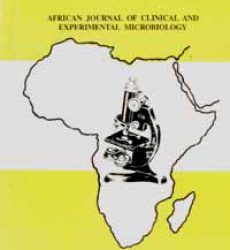Abstract
As one of the common sources of protein available to man, fish is highly consumed due to its lower cholesterol content and price. So it forms a rich protein source for both poor and rich. As a part of checkmating the public health risks associated with this general dependence of the population on fish, the microbiological assessment of smoked fish, Scombia, scombia sold in Owerri was embarked on with the aim of ascertaining the microbial quality, the presence and prevalence of microorganisms of public health importance. A total of one hundred and eight (108) samples were collected from the smoking Factory, Open Market and Hawkers. These were analyzed microbiologically for viable heterotrophic bacteria and fungi count on Nutrient and Potato dextrose agar respectively, using pour plate method and coliform count in MacConkey broth by multiple tube method (MPN). The mean value results from the analysis revealed high microbial contamination in all the samples. The resultant data were analyzed statistically using randomized block design of Analysis of Variance (ANOVA) at 95% level of confidence and the difference were separated using the least significance difference (LSD). The mean results of viable heterotrophic bacteria and fungi count showed no significance difference for the collection sites; but the coliform mean results for the three sites showed marked variation at 95% level (P>0.05). Identified bacteria, include: Staphylococcus aureus, E. coli, Bacillus sp., Klebsiella sp., whereas fungi arePenicillium sp., Aspergilusl sp., Fusarium violaceum, Biospora sp., Candida sp, Botryodioplodia sp., Alternania sp. This high level of microbial contamination can be traceable to handlers, and environment to which this fish is exposed during smoking and selling exercises, and considering the danger it portends to human health, public health and food safety authorities should intensify their monitoring efforts towards controlling such contamination.
Key words: Bacteria, Yeast, Mould, Smoked fish, Contamination.
Download full journal in PDF below
Microbial status of smoked fish, scombia scombia sold in Owerri, Imo state, Nigeria

